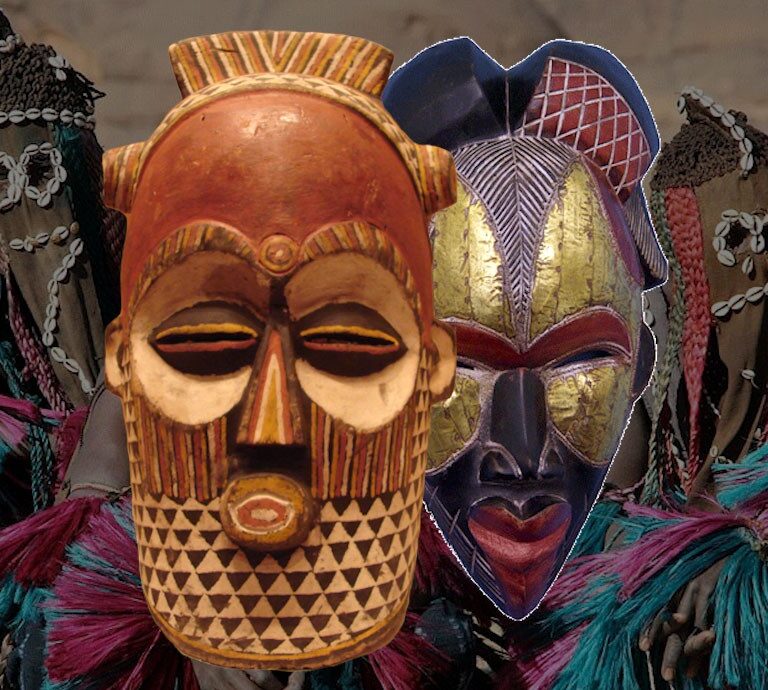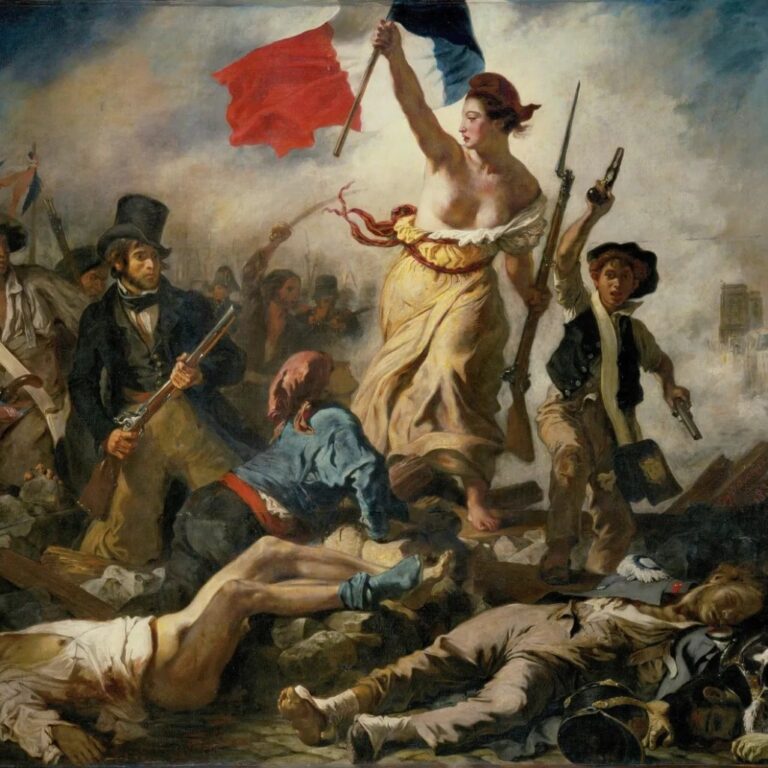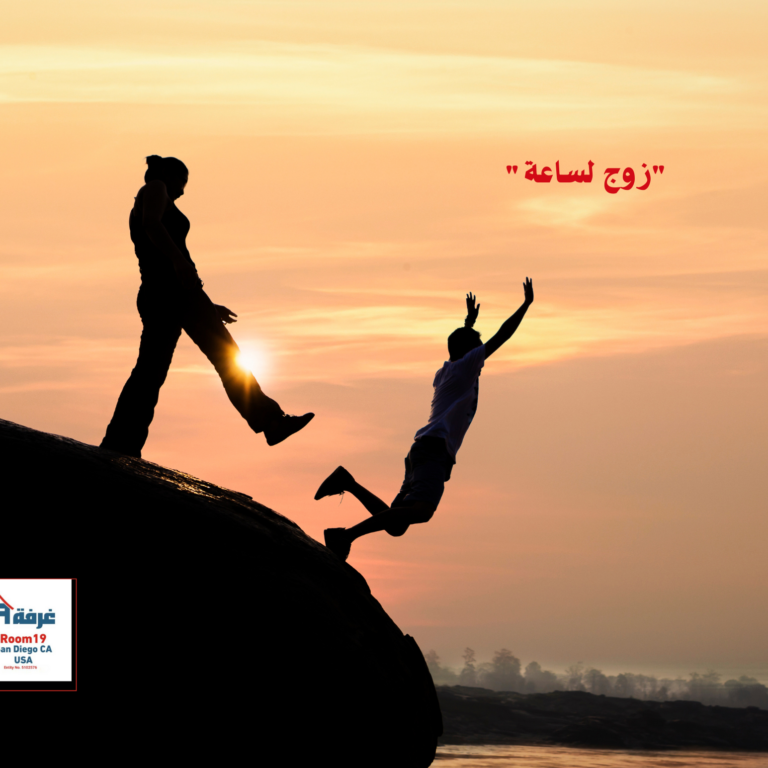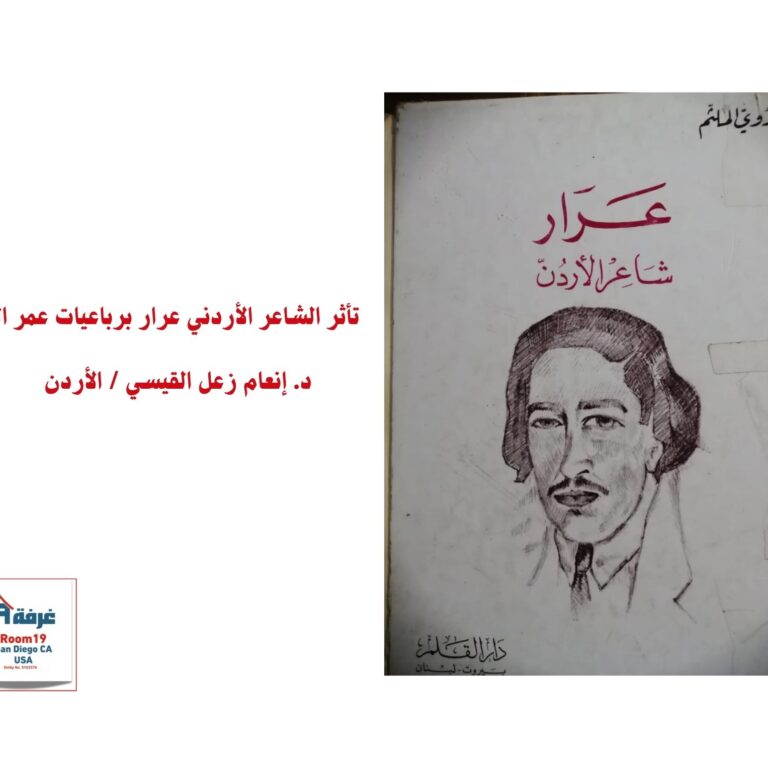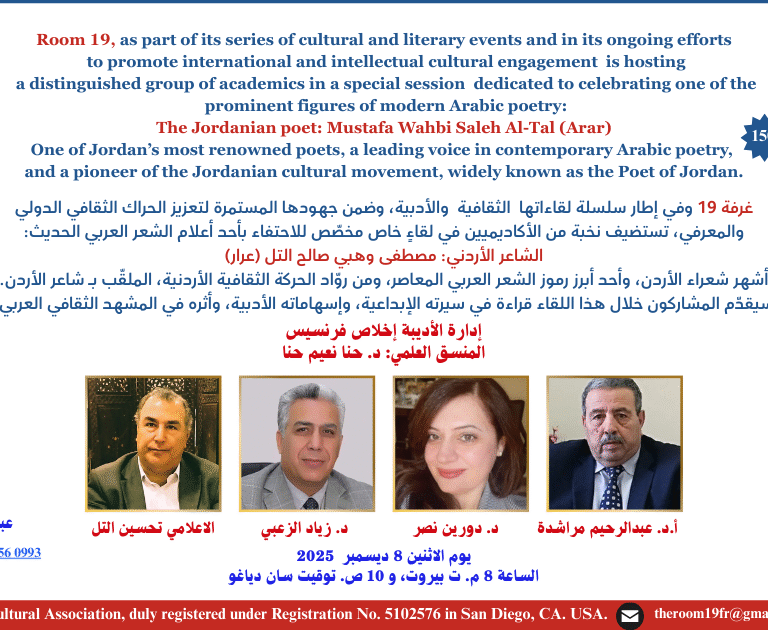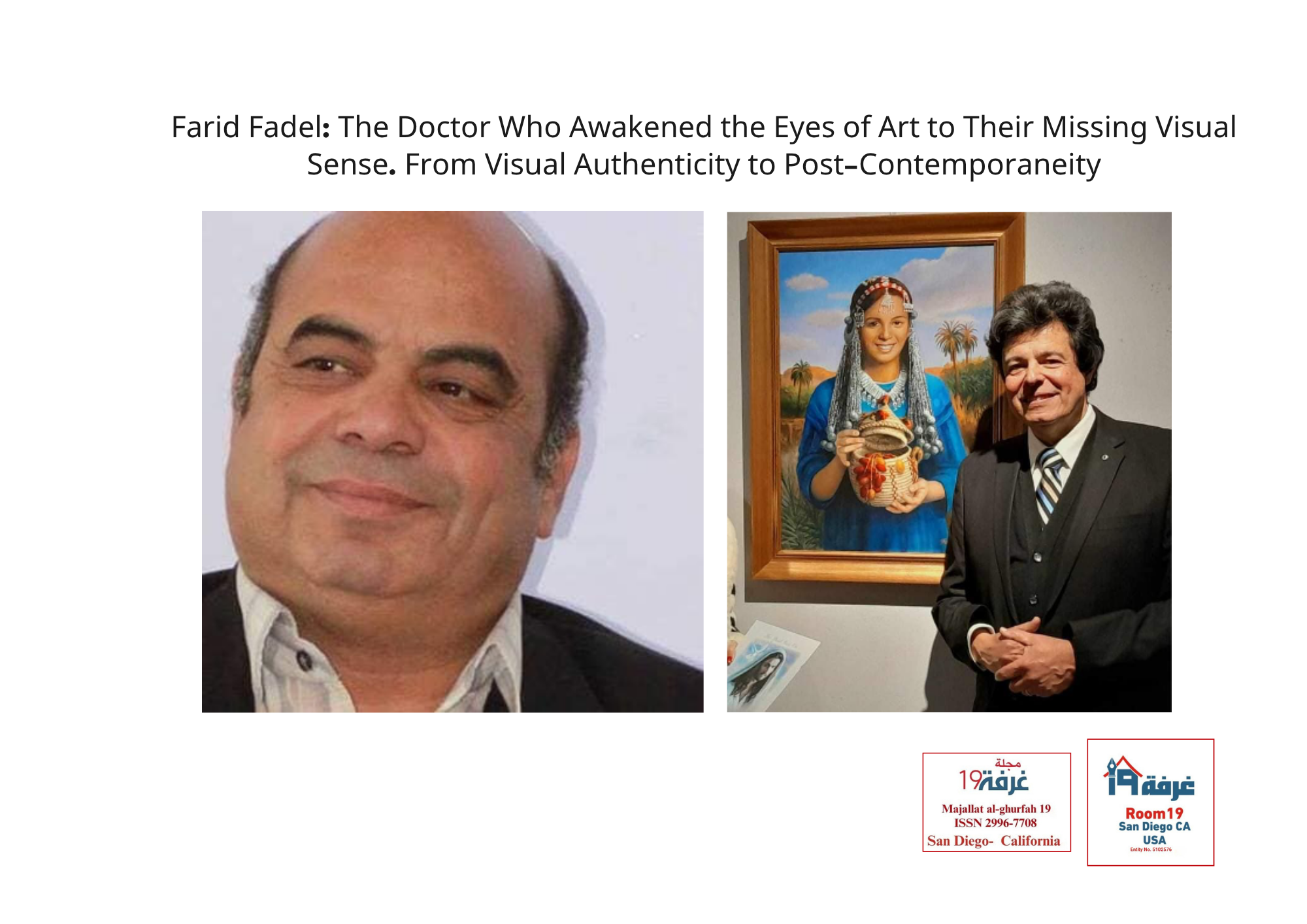
Farid Fadel

From Visual Authenticity to Post-Contemporaneity
Written by the international poet Saadany El-Salamouny, founder of the science of Visual Illiteracy Eradication.
Translated, Edited, and Proofread by Mohamed Farahat
When I take a brief look back at the Egyptian, Arab, and even global art scenes, I realize — almost instantly — that the structure of a visual artwork closely resembles the structure of a poem. This remains true across schools and movements throughout history, right up to today.
But I also see how hidden forces have shaped and imposed structures that are far removed from true creativity — in both visual arts and poetry. Those who dare to step outside the frame of this global “template” are often attacked, marginalized, and even denied their basic livelihood — especially if they’re Egyptian or Arab.
And this is nothing new. Innovators, whether European or Arab, have always been met with fierce opposition.
Any true pioneer outside the “global herd” faces brutal wars.
And now, we stand before a rare pioneer who has defied the frames imposed by these hidden forces — local, regional, and global alike.
He is both an ophthalmologist and a renowned visual artist: Farid Fadel.
He passed through many schools of art — from expressionism to still life, abstraction to surrealism.
He studied them all with rigorous understanding and an exceptionally sharp eye.
And then he made a decision: to become himself.
Yes, with a scientific eye — because he was born from science, raised by science, and practiced science.
His father was a remarkable scholar, married to a distinguished scientist. Together, they raised the founder of what I call the “School of Visual Magic”: Farid Fadel.
While modern art movements were busy reinventing form and shape — sparking noisy trends with every new “look” — Farid quietly observed.
And in his silence, he came to a discovery:
The evolution of the painting doesn’t lie in its changing shape.
It lies in its spirit — and the spirit of the spirit… is the visual sense.

The Visual Sense
Let’s step briefly away from academic definitions — because to reach this powerful sense, we must escape the frame of traditional science. Unfortunately, modern science hasn’t yet discovered this sense — nor the organs it comes from.
It may be discovered soon, and when it is, we’ll see that the visual sense comes in many forms:
The scientific visual sense
The intellectual visual sense
The creative visual sense
The emotional visual sense
The sensual visual sense
The criminal visual sense …and more.

Each of these senses creates its own kind of visual output. And this sense behaves very much like a human being: it has a body, eyes, ears, a mind, a tongue, a soul, and emotions.
Farid Fadel devoted his entire life to this hidden sense.
He worked to translate its presence — rooted deep in nature — from rock, to trees, to sky, to sand, to people…
He took what you see with the naked eye and showed you what only the eye of the soul could perceive.
That’s why his visual works speak to everyone — from top scholars to simple people, even to the illiterate.
To be clear: I don’t mean that every innovator outside the mainstream is necessarily great. But true geniuses? They are rare — counted on the fingers of one hand.
Let Us Soar Through Farid Fadel’s Moving Visual Constant Someone might say:
— “Oh, so you mean he belongs to the school of still life?”
To which I say:
— “Visually shut up, you ignorant fool! Whoever called it still life is as blind as you. How can a living nature be ‘still’ when it explodes with beauty? How can it be ‘silent’ when it speaks to the ears of your eyes for centuries?
How can it be still… when it sings in color and light?” So please — silence your shallow sight so I can finish this article.
A Painting Is a Human Being It has: A body, a soul, a mind A tongue, a breath Colors are its language And its language is color The soul of the painting Is the twin of the artist’s soul Human Visual Simplicity
Farid Fadel dedicated his life to building a school based on human visual senses — a school that embraces all movements, from the classical to the contemporary, but speaks in the voice of universal human simplicity. Reaching this visual sense isn’t easy. The naked eye only catches fragments — because this sense is born from the womb of the eye of the soul. It is her mind, her body, and her voice. So, its direct expression is pure visuality, But its indirect message — its deeper essence — is true visual consciousness. Farid Fadel doesn’t need a mere article to explain his world. He needs entire books.
by Saadani Al-Salamouni
Poet & Writer
Founder of the Science of
Visual Illiteracy Eradication

